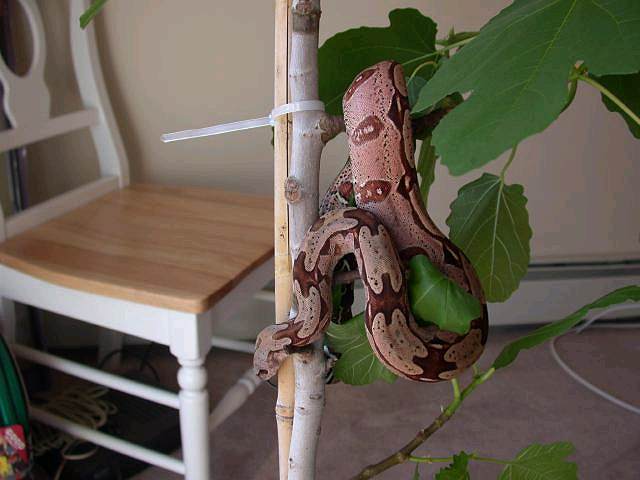As enthusiasts of Boa constrictor, we are frequently asked this question. The answer to this is: In the worst case, you don’t recognize it at all. Let us assume that a "breeder" would cross a female Boa c. constrictor, Suriname locality with a male Boa c. imperator, Colombian locality. This results in a litter of, say, 20 young. You can be very certain that there will be at least one animal in this litter that looks like mom, has all the external characteristics of a Suriname Boa c. constrictor, and cannot be physically distinguished from such. There will also be at least one neonate in this litter that shows all the characteristics of its father, and looks like Boa c. imperator.
However, if these animals are later used for breeding, the swindle will quickly come to light, since the young will look quite multi-cultural.
We have lately seen the claim for the animals to be “…100% pure-bred” in ads in the classified section of the DGHT (German Society for Herpetology), however, these claims rarely proved to be legit upon closer examination. Statements, such as: “The breeder assured me that the animals were pure-bred, but I don’t know for sure”, or, “…judging by the behavior of the parent animals as neonates, I conclude that their parent-animals must have been wild-caught” are common.
“Oh mei” (“Oh my”), as one would say in Bavaria...
Therefore, there is only one way to be one hundred percent certain: Purchase from absolutely reliable sources only.
The following is of utmost importance:
The line of descent should be traceable back to its distribution area!
Only if this is possible you can be sure that you are acquiring a snake that is of true subspecies AND locality.
The same is also valid for determining the subspecies Boa c. constrictor and Boa c. imperator. Proper determination can be done only if the line of descent has been studied accordingly.
Unfortunately, it is human nature to believe what one wants to believe. The claim of the offspring being (for instance) pure-bred Honduran Boa c. imperator is therefore often readily accepted without proof, if the animals happen to be offered at a reasonable price. Be warned: Since the demand for pure-bred boas has increased significantly over the last few years, even the dumbest breeder of crossbred boas knows by now what to tell people in order to make the sale.
Recognize a crossbreed Boa constrictor | Boa constrictor mutts | distinguish a crossbreed Boa constrictor | how to tell a crossbreed boa from a true boa constrictor | Boa constrictor cross | Boa constrictor mix-breed | cross-breeding boa constrictors
Furthermore there are keepers and breeders of Boa constrictor, who do not know, that their animal is a crossbreed. They take a look at the CITES – certificate and read Boa c. constrictor or Boa c. imperator. Well, if the government makes this classification, then it should be true, right? No! For the most part, the officials in charge do not have the knowledge, to distinguish a crossbreed from a true Boa constrictor, so they just note down, what the breeder claims.
Especially for swindlers among the breeders this circumstance was an advantage. So a crossbreed with a red tail quick became a Suriname red-tail boa. No red tail? No problem! Then they sell it as true a Boa c. imperator.
There are many keepers of crossbreeds, who swear that their animals are true Boa c. constrictor or Boa c. imperator.
 This being is the living evidence for the fact, that it is impossible to tell a true Boa constrictor subspecies from a crossbreed only from its appearence.
This being is the living evidence for the fact, that it is impossible to tell a true Boa constrictor subspecies from a crossbreed only from its appearence.
The animal looks like a true Boa c. constrictor from the distribution area Surinam, but the father was a Colombian Boa c. imperator!
You see what we will face in the future and maybe you understand why we use almost exclusively wildcaught and farm bred animals for our breeding projects.
We thank Tom Burke for providing us with this photo. He has not bred this animal, he just bought it. He don't shares our attitude completely, either.
